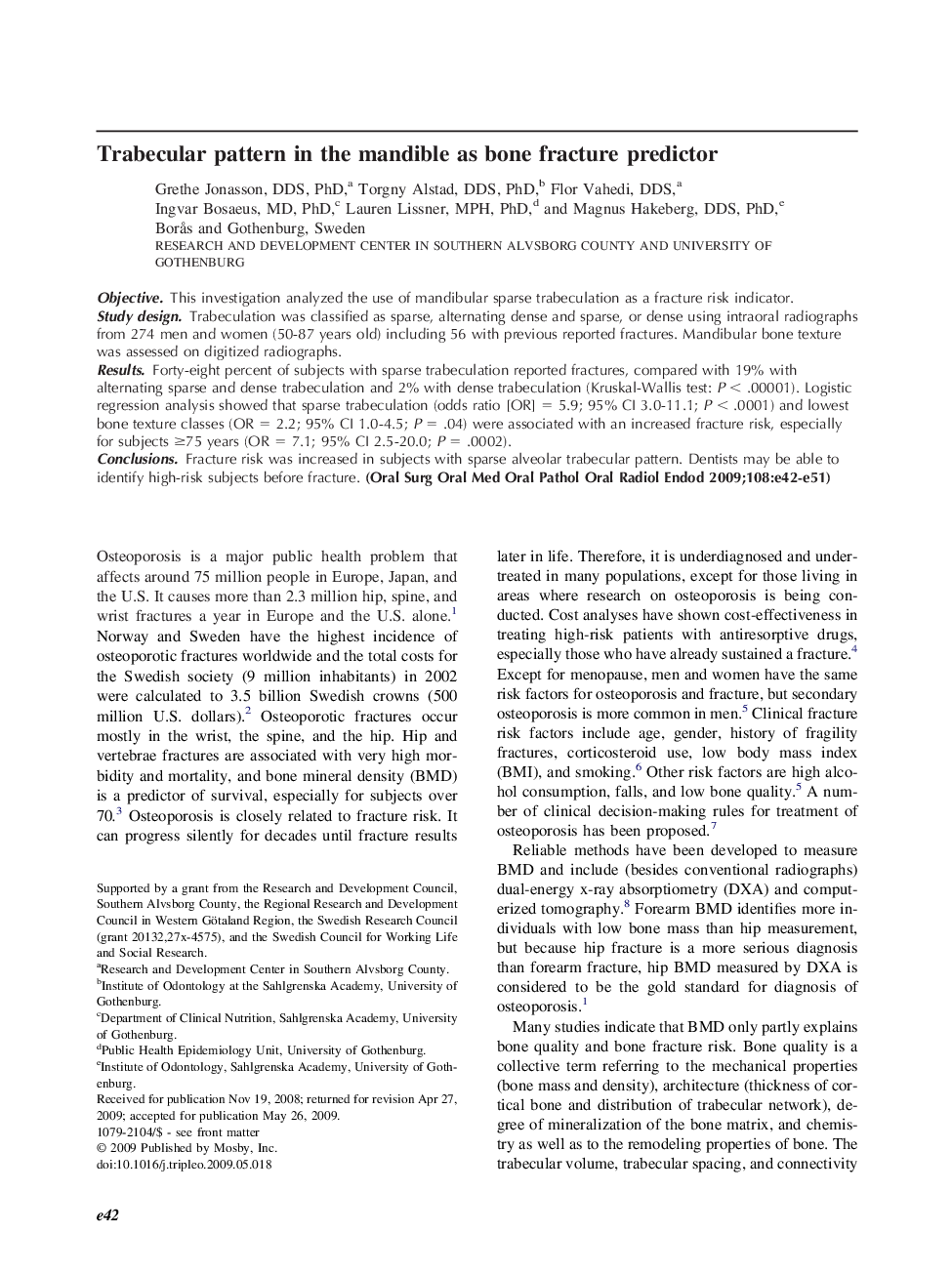| کد مقاله | کد نشریه | سال انتشار | مقاله انگلیسی | نسخه تمام متن |
|---|---|---|---|---|
| 3167935 | 1199386 | 2009 | 10 صفحه PDF | دانلود رایگان |

ObjectiveThis investigation analyzed the use of mandibular sparse trabeculation as a fracture risk indicator.Study designTrabeculation was classified as sparse, alternating dense and sparse, or dense using intraoral radiographs from 274 men and women (50-87 years old) including 56 with previous reported fractures. Mandibular bone texture was assessed on digitized radiographs.ResultsForty-eight percent of subjects with sparse trabeculation reported fractures, compared with 19% with alternating sparse and dense trabeculation and 2% with dense trabeculation (Kruskal-Wallis test: P < .00001). Logistic regression analysis showed that sparse trabeculation (odds ratio [OR] = 5.9; 95% CI 3.0-11.1; P < .0001) and lowest bone texture classes (OR = 2.2; 95% CI 1.0-4.5; P = .04) were associated with an increased fracture risk, especially for subjects ≥75 years (OR = 7.1; 95% CI 2.5-20.0; P = .0002).ConclusionsFracture risk was increased in subjects with sparse alveolar trabecular pattern. Dentists may be able to identify high-risk subjects before fracture.
Journal: Oral Surgery, Oral Medicine, Oral Pathology, Oral Radiology, and Endodontology - Volume 108, Issue 4, October 2009, Pages e42–e51